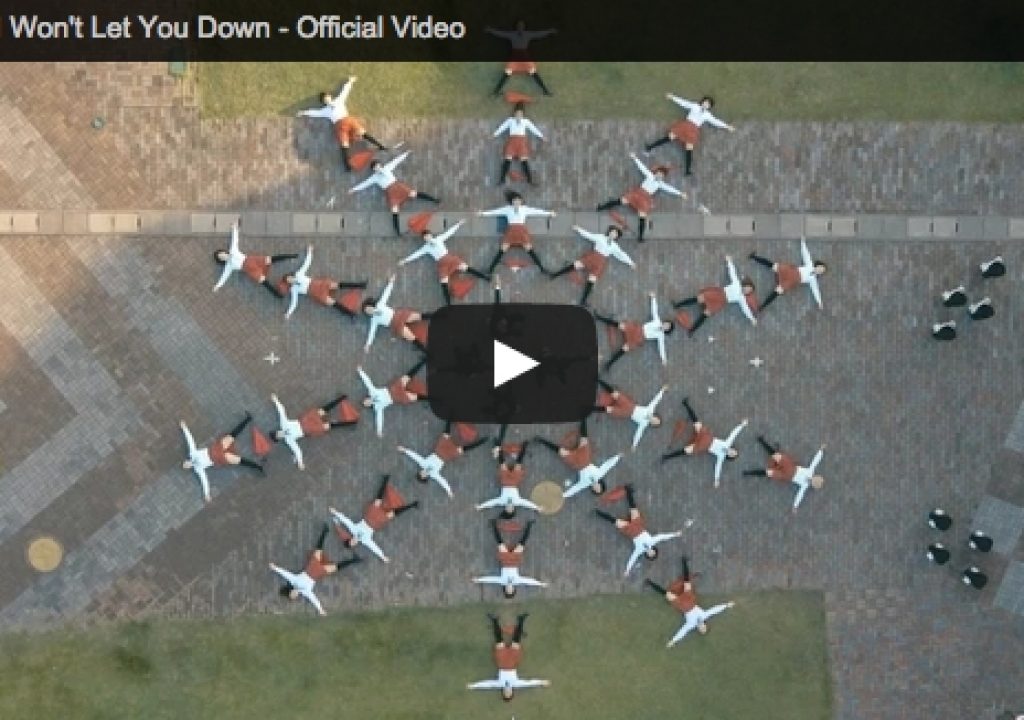Alternative rock band OK Go is not only known for its catchy songs, but also for its highly creative music videos. Since the music video for Here It Goes Again—a single shot of the band dancing on treadmills—became a viral hit and won a 2007 Grammy Award, OK Go’s videography has continued to win fans around the world. Many of the band’s music videos involve single camera shots and precision choreography with inspiration taken from Rube Goldberg machines, animation, and optical illusions.
Alternative rock band OK Go is not only known for its catchy songs, but also for its highly creative music videos. Since the music video for Here It Goes Again—a single shot of the band dancing on treadmills—became a viral hit and won a 2007 Grammy Award, OK Go’s videography has continued to win fans around the world. Many of the band’s music videos involve single camera shots and precision choreography with inspiration taken from Rube Goldberg machines, animation, and optical illusions.
For the song I Won’t Let You Down, OK Go put together a top Japanese creative team to develop a video inspired by mass games, classic Hollywood musicals, and robotics. The band first brought on Morihiro Harano, founder of Mori, Inc. and a well-known name in innovative advertising and product design, to act as creative director for the video. Harano selected Jun Nishida from Drill, Inc. as the art director and Japanese pop music video director Kazuaki Seki from creative agency ooo.
“OK Go is known for complex videos that require extensive and accurate planning,” says Harano. “Adobe creative software is the foundation for our crucial previsualization process.”
Combining high tech with old-school Hollywood
The music video for I Won’t Let You Down was filmed in a single shot, using a remote-operated camera drone to literally reach new heights. The camera sometimes pulls in close to follow members of the band as they ride Honda UNI-CUBs, high-tech personal mobility units. At other times, the camera flies overhead to capture highly precise choreography reminiscent of the showgirls in Busby Berkeley’s classic Hollywood musicals.
In the closing scenes, the camera drone flies up hundreds of feet to capture 2,300 dancers opening and closing colored umbrellas to create an effect similar to a dot matrix display. With perfect timing, the color dots form pictures of the band members, geometric patterns, and even scrolling messages in English and Japanese. The video ends by flying the camera up to 700 meters for a soaring, panoramic shot of Japan from above the clouds.
Bringing inspiration to life through Adobe
With complex choreography and equally complex drone camera work operating on a large scale, the video required detailed planning for precision movements. The Japanese creative team used a range of Adobe products to solidify their creative vision. In the initial planning stages, Harano used Apple Keynote to quickly construct a pitch, but he then switched to Adobe Illustrator and Adobe InDesign to polish the pitch into clear creative designs. He shared these designs with the rest of the team using PDF files created with Adobe Acrobat.
Nishida and Seki took Harano’s initial designs and fleshed out the details. Nishida used Adobe Illustrator and Photoshop to create a storyboard for the video. “Adobe Photoshop and Illustrator are essential infrastructure for any creative project,” says Nishida. “We simply can’t do without it.”
Seki used Adobe After Effects to create animated previsualizations that further cemented the plans. “I like how Adobe After Effects makes it simple and easy to create animations,” says Seki. “I can play with the movements without getting bogged down with technical issues.”
The editing team used Adobe Premiere Pro to edit the video, but Seki also used Premiere Pro to check footage on site. “Adobe Premiere Pro enables me to play back video on site without rendering, which means that we don’t have to wait around and delay reshoots when they’re needed,” says Seki.
What started out as something OK Go claimed was “a simple idea” resulted in an over-the-top creative video that went viral the day it was released on October 27, 2014. After garnering six million YouTube views in just two days, it now has more than 20 million views and climbing.
Learn more about Adobe Creative Cloud



